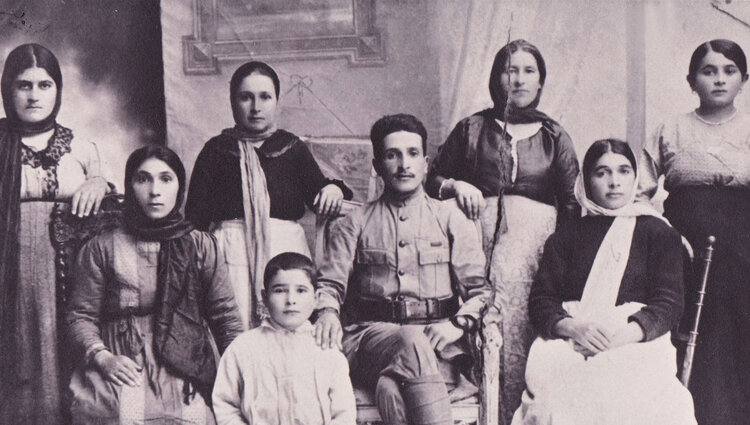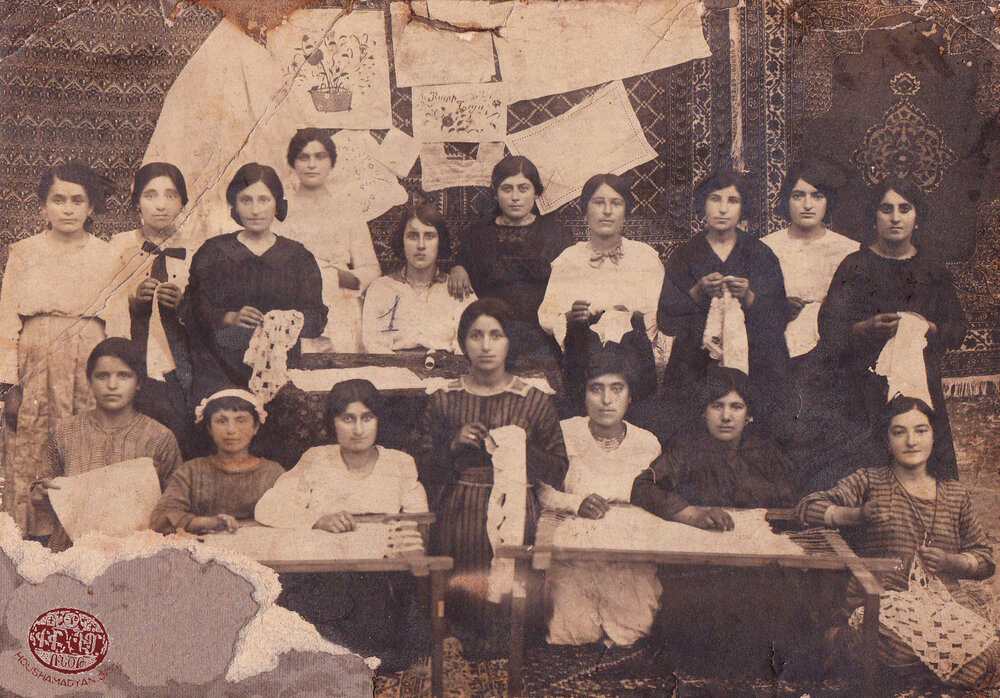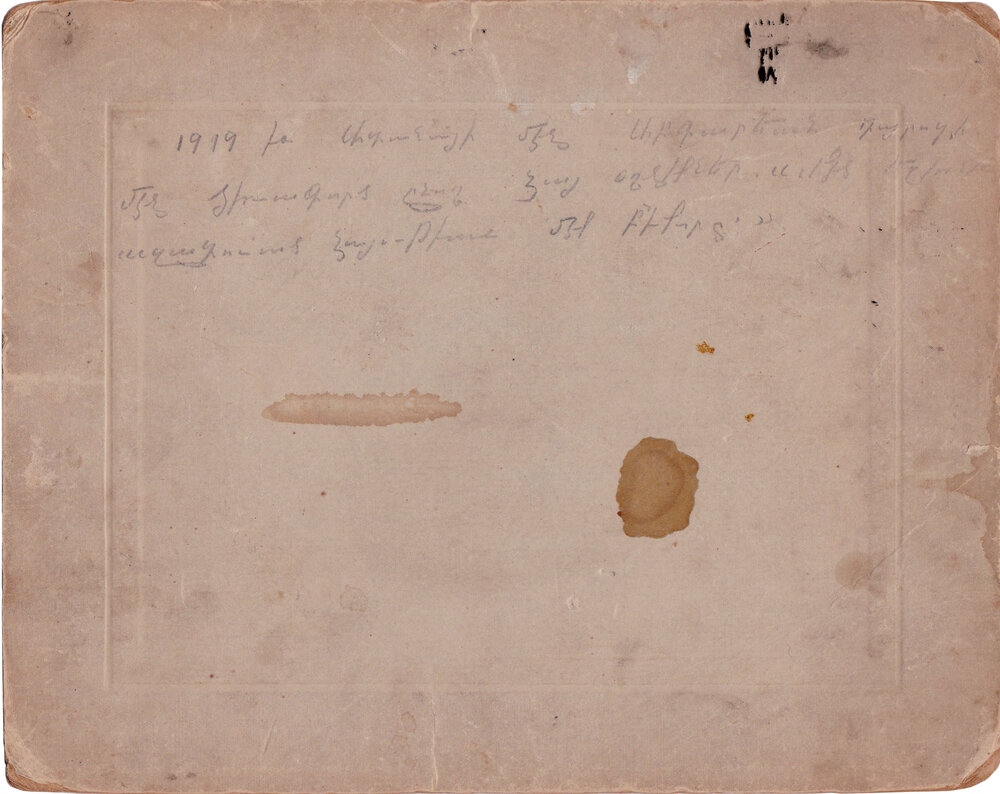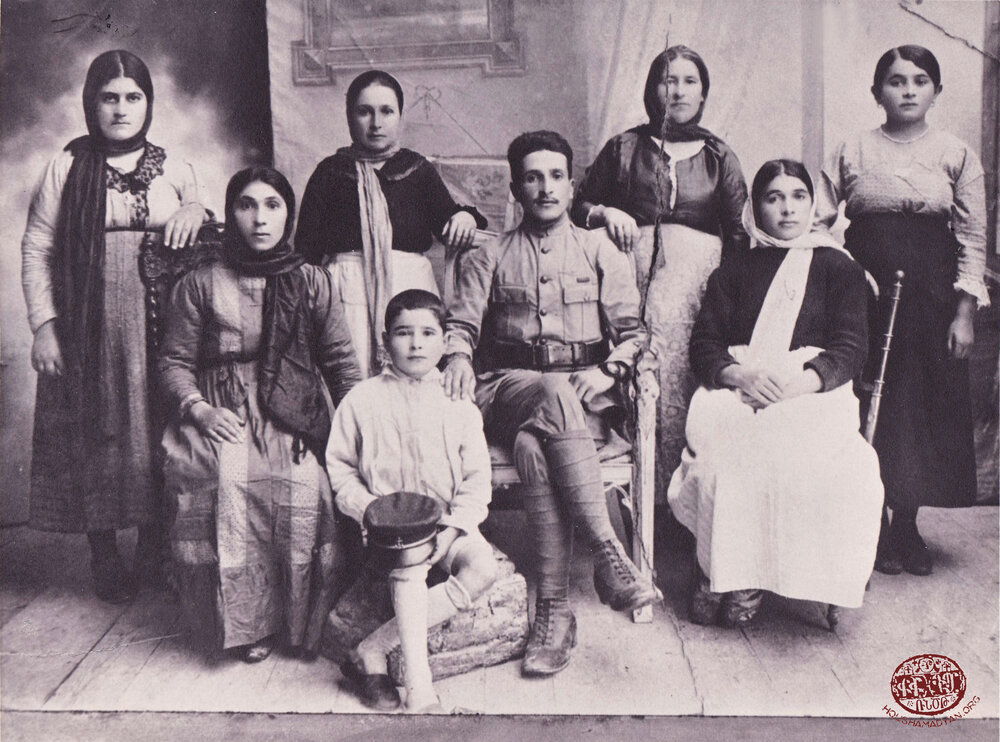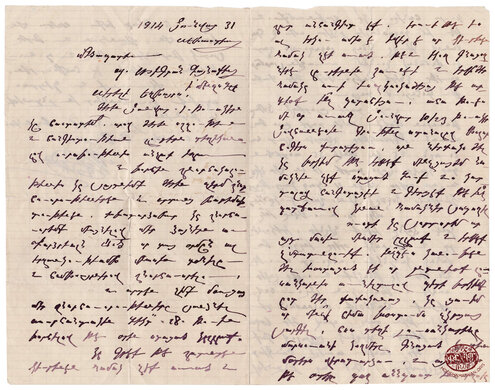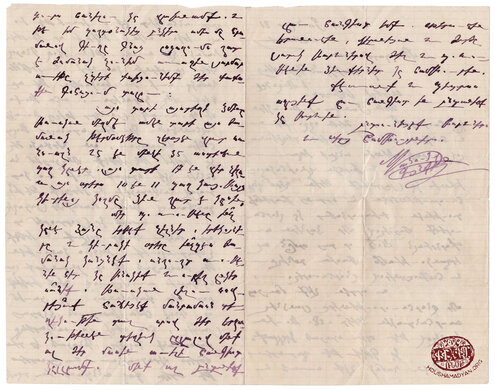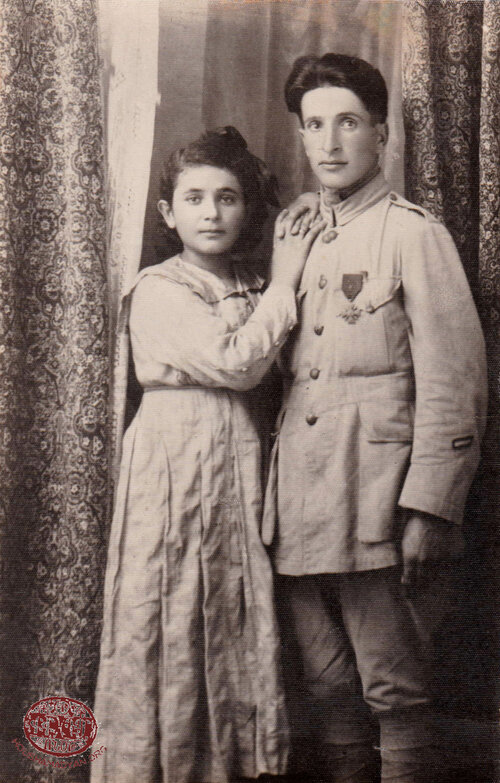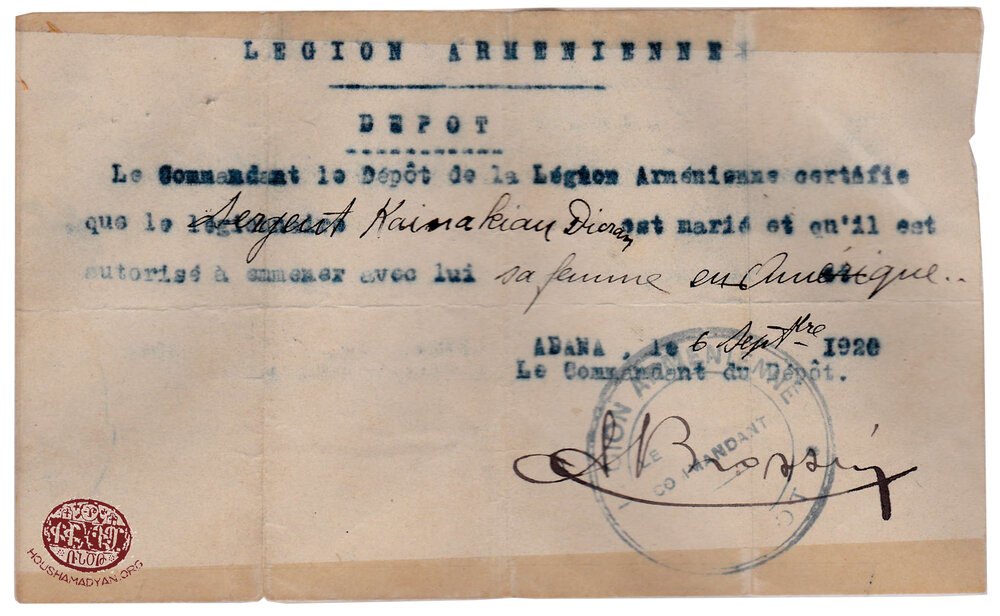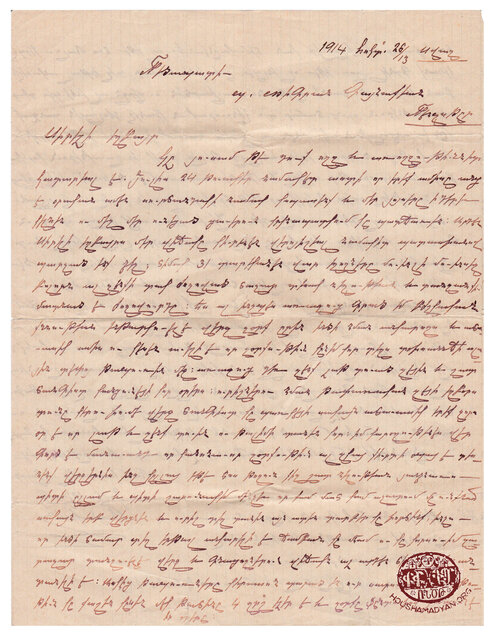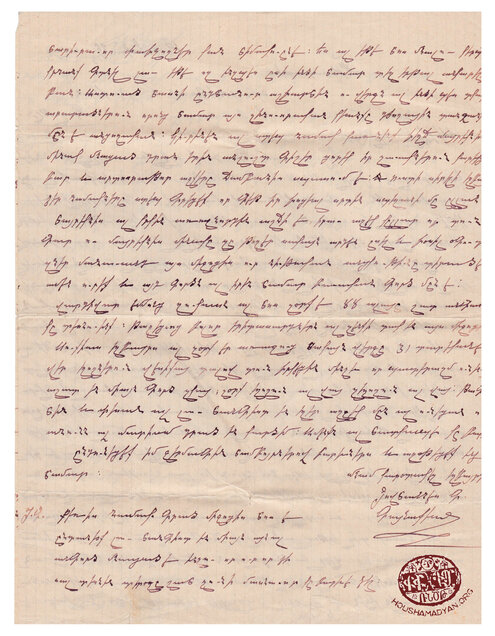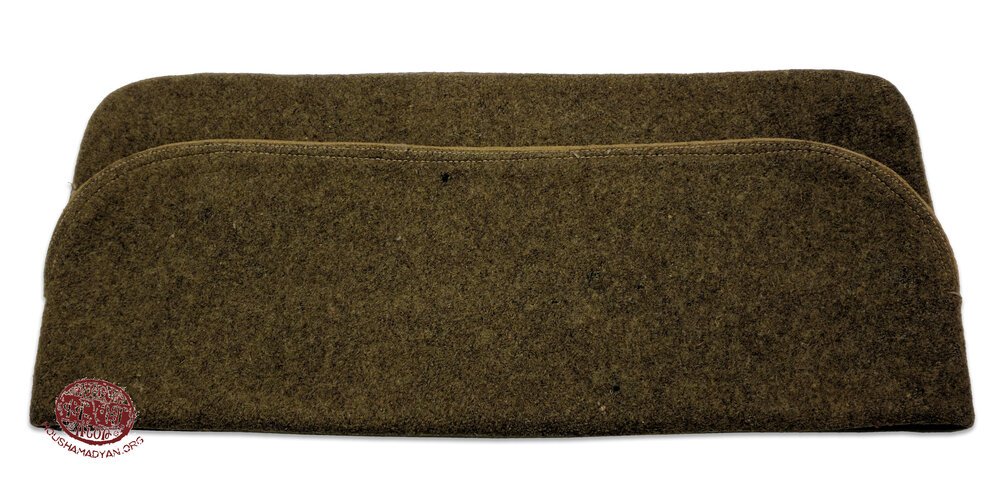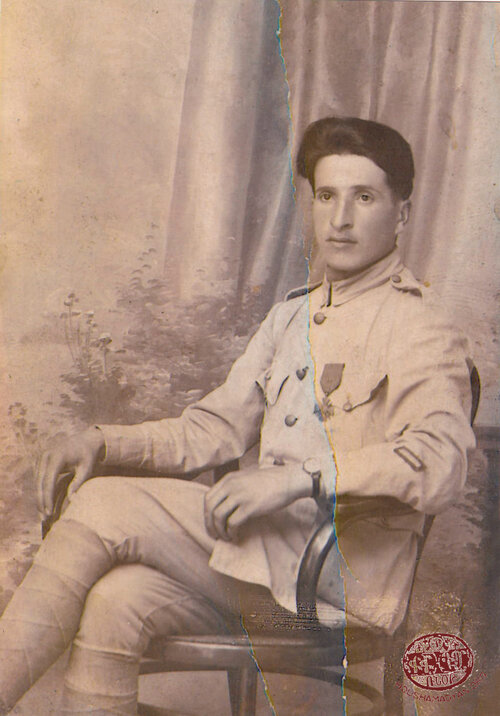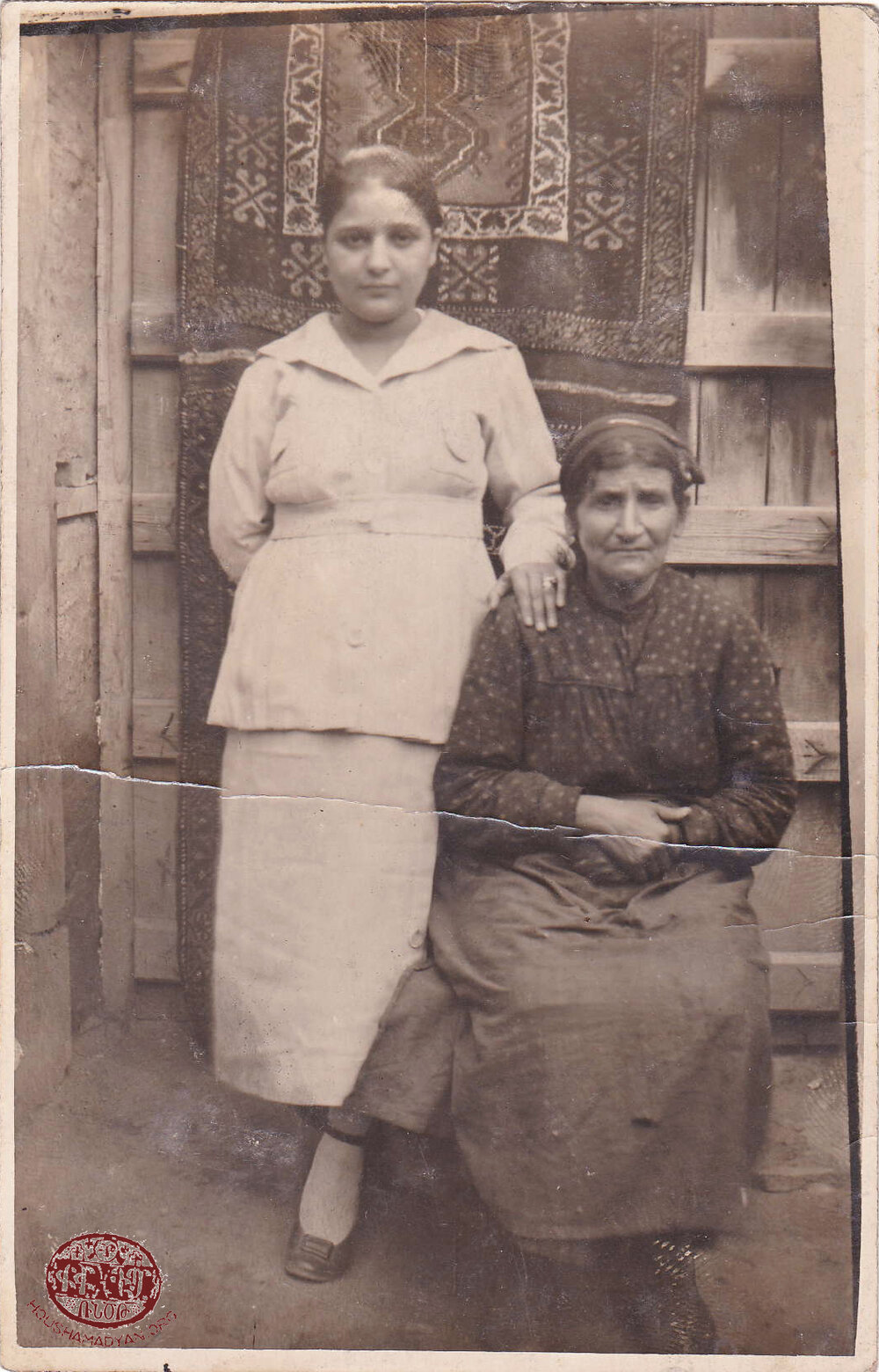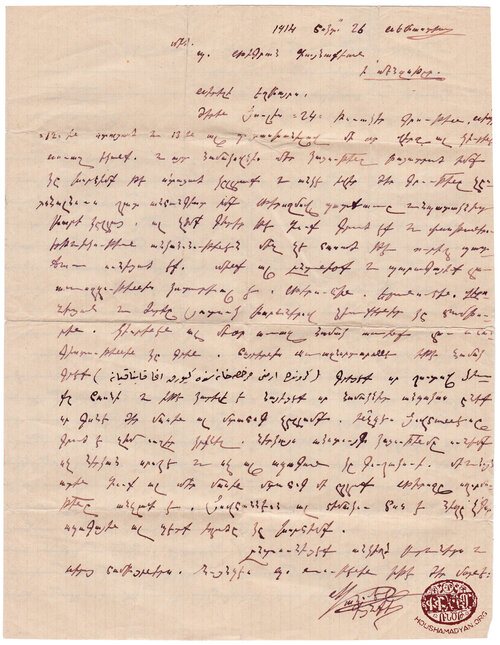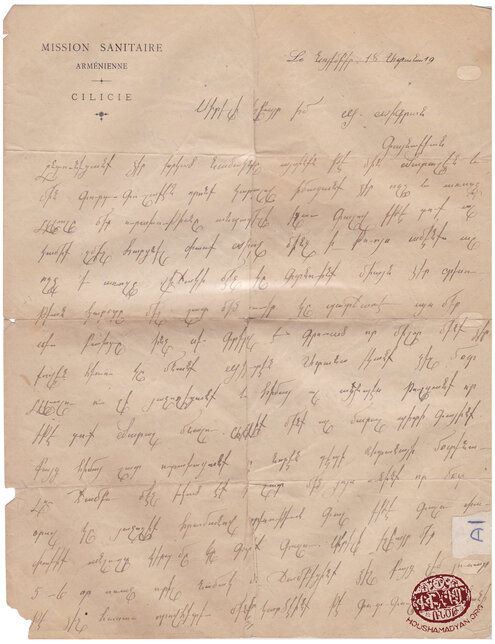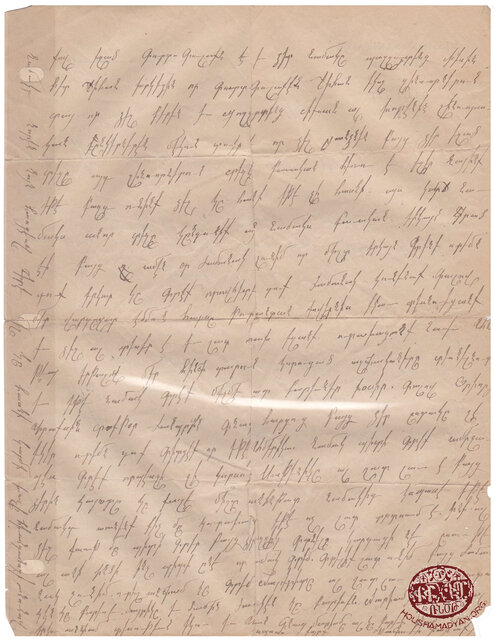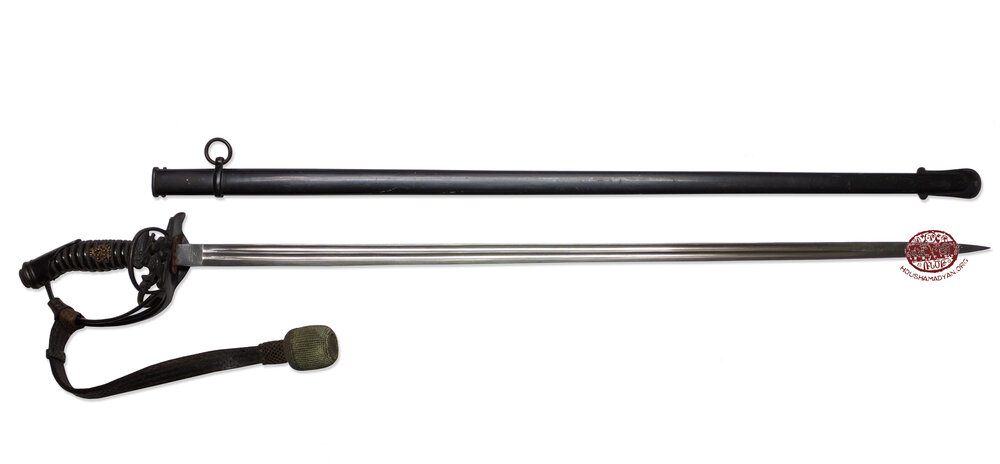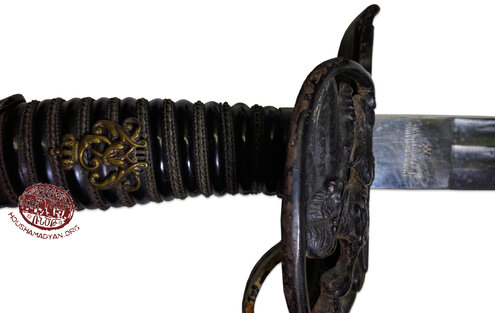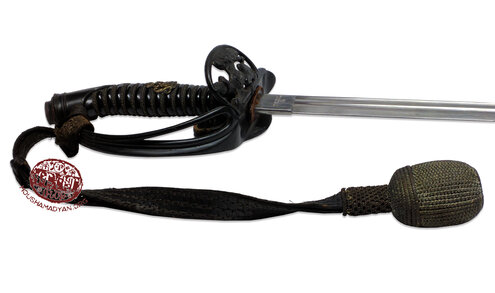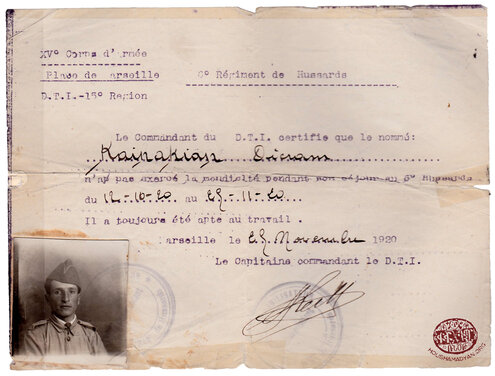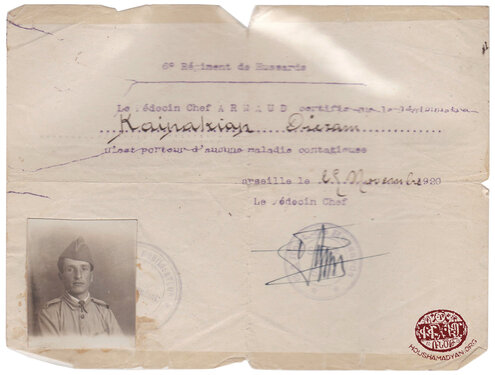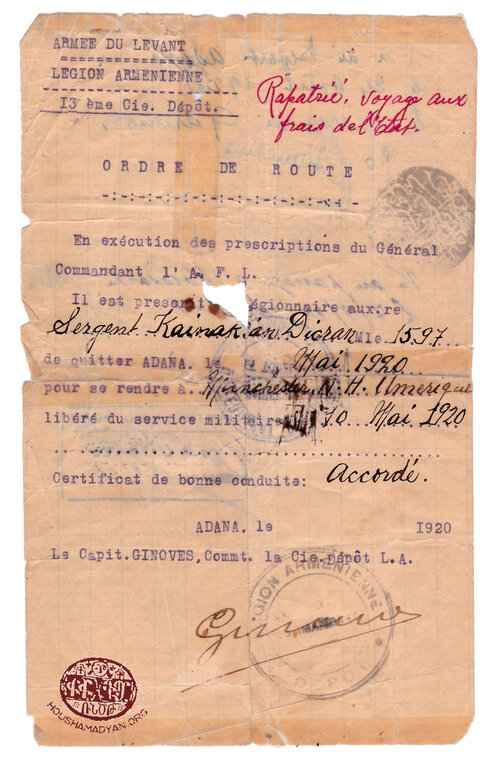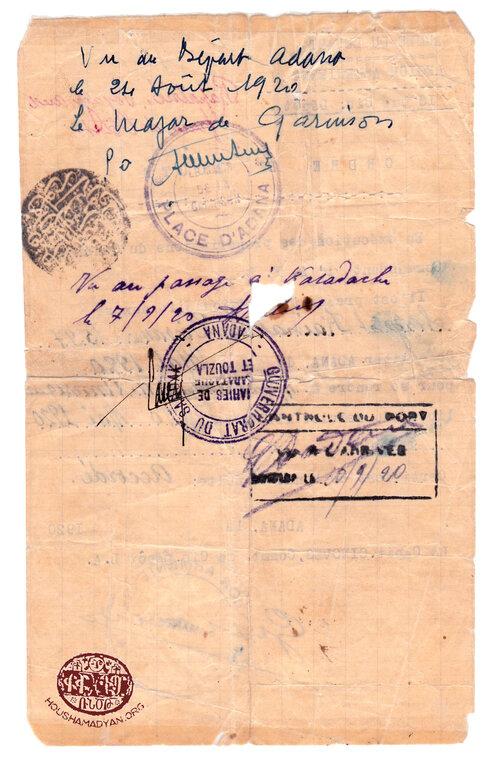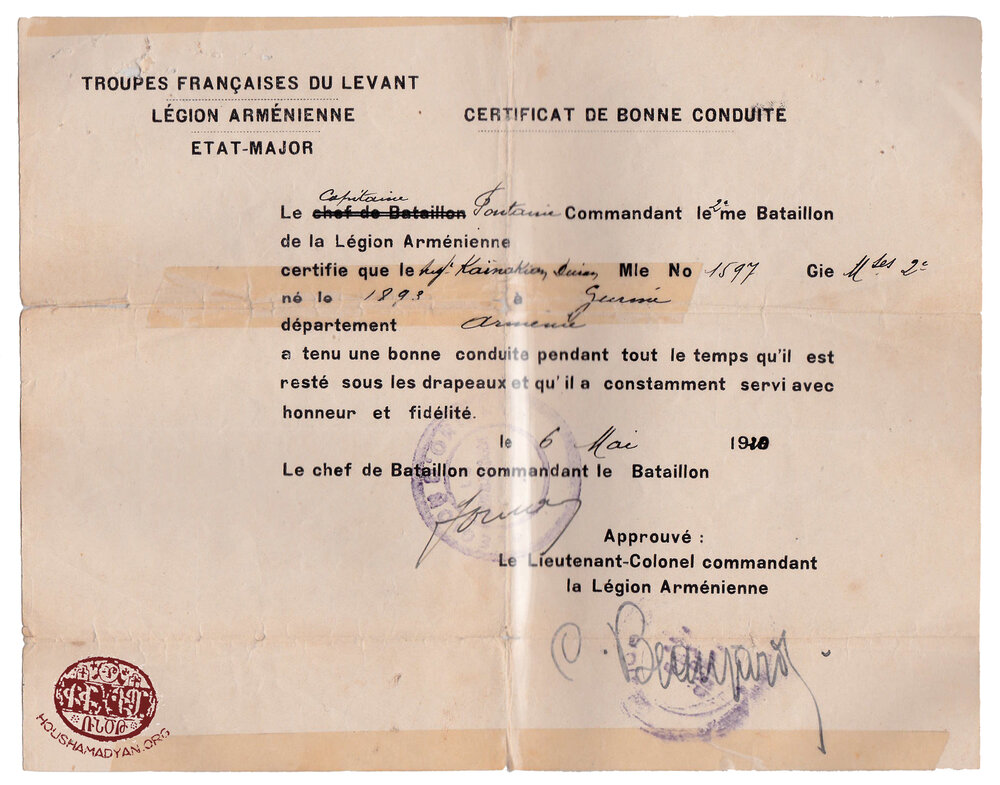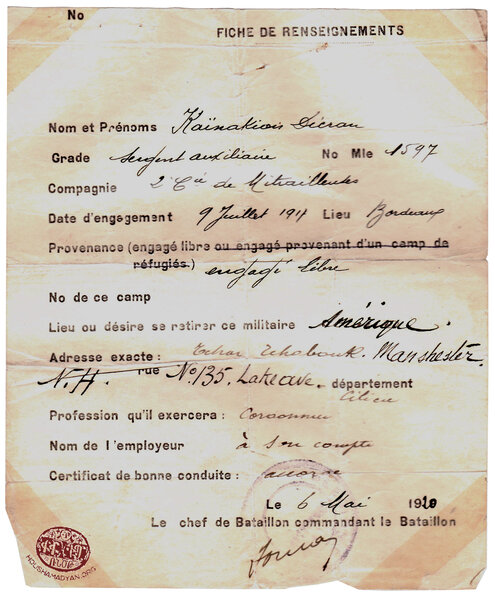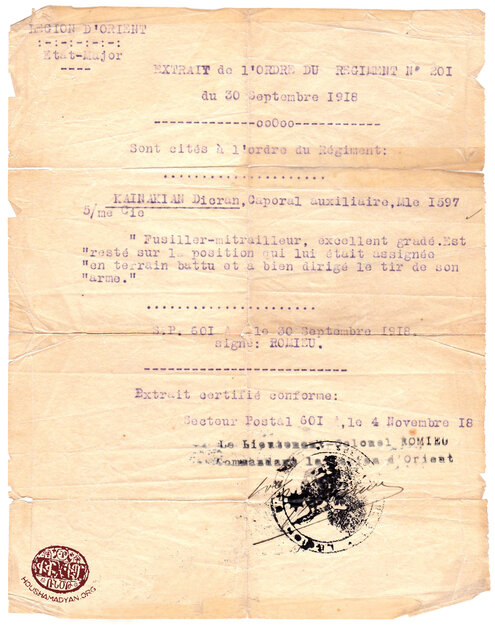Ohanessian collection - Buffalo, NY, USA

The photographs, documents and objects displayed on this page are part of Peter, Steve, and Aris Jr. Ohanessians' collection in Buffalo, New York. The Ohanessian brothers graciously put their family archive at Houshamadyan's disposal. The photographs depict Peter, Steven and Aris Jr.'s grandmother, Satenig Kaynakian (née Kizirian), born in Gurin/Gürün in 1902 and died in the US in 1996, and their grandfather, Dikran Kaynakian (also spelled Dickran), who was also born in Gürün in 1893/1894 and died in the US in 1975. Dikran Kaynakian’s father was Kevork Kaynakian, while his grandfather was Manoug Agha Kaynakian.
The Kaynakian family is originally from Gürün; we know that in 1913, Dikran Kaynakian had left his native Gürün and gone to Nashua and Manchester (New Hampshire, United States), to work in a shoe factory. Dikran had 4 brothers: Hovhanness, Soukias, Manuel and Samuel, and one sister, Takouhi. Dikran’s brothers Manuel and Hovhanness lived in Sivas/Sepasdia while Dikran’s parents continued to live in Gürün. His mother's name was Mary Vranian (later Kaynakian). In 1920, Dikran’s sister Takouhi immigrated to the US along with her parents, they settled in Richmond Virginia.
Like many other families, the Kaynakian family members were also dispersed as a result of the Genocide. Many of them died, while some of the family members who survived settled in Cilicia in 1919, like many other survivors. We also know that in 1917, Dikran would leave the States and would first go to France, then to Egypt to join the Eastern Legion, which was later called the Armenian Legion. While having joined this unit fighting alongside the Allied armies, we find Dikran in Beirut, Adana, Marash, Kurtkulağı, and later again in Adana.
Dikran and Satenig would marry in Adana in August 1920. The following month they would leave Cilicia. They stayed in Marseilles, France for a few months and later went to the States.
The Apkarian Technical School, Adana, 1919.
The Apkarian technical school was a shelter for Armenian orphaned girls and widows who were collected and regrouped after the Genocide. Peter, Steve, and Aris Jr. Ohanessians' grandmother Satenig Kizirian (later Kaynakian) is in the far left in the top row.
Satenig was the daughter of Serop Kizirian and Lucy Chnnozian, both were from Gürün. After marrying a fellow Gurintsi in Adana, Dikran Kaynakian, Satenig went to Richmond VA, and the couple had two sons and two daughters.
This photograph was taken in 1920 in Adana or Beirut, Lebanon.
We know that Satenig and her family lived in Beirut after her father died but we don’t know for how long. It is possible that the photo was taken when Dikran was visiting Beirut while Satenig was there. It is also possible that the photo was taken back in Adana, as it is around the same time that Dikran and Satenig got married in Adana.
The gentleman sitting in the center is Dikran Kaynakian, born in Gürün in 1893 or 1894. He was the grandson of Manoug Agha Kaynakian, and died in Richmond VA in 1975. He was a volunteer in the Eastern Legion (later also the Armenian Legion).
The women standing from left to right are:
- Yeghsapet Canarian (Satenig’s sister in law’s sister in law).
- Takouhi Vartanian (née Kaynakian, Dikran's sister).
- Margaret Kazarian (the wife of Satenig’s and Manea’s uncle, who died in Argentina).
- Satenig Kaynakian (née Kizirian, Dikran’s future wife).
Sitting from left to right are:
- Mariam (surname unknown), she is Satenig's sister's, Manea Kazarian’s sister-in-law.
- Sergeant Dikran Kaynakian wearing his Armenian Legion uniform.
- Satenig's sister Manea Kizirian (the latter’s husband died fighting on the Russian front during WWI).
Aram (surname unknown); he is Dikran’s nephew (his sister’s son, she is not in the photo), Aram later died in South America.


Satenig Kaynakian (born Kizirian) (1902-1996) and Dikran Kaynakian (1893/1894-1975), probably shortly after getting married. Photograph taken in either Adana or Beirut, 1920.
Sergeant Dikran Kaynakian was a volunteer in the Armenian Legion. Dikran was awarded the Croix de Guerre. Satenig and Dikran had two sons and two daughters.
A letter from Hovhanness Kaynakian addressed to his brother Dikran Kaynakian (Manchester, New Hampshire, United States), from 26/13 October 1914, Sivas/Sepasdia.
The main topic of the letter is the conscription, which has reached extreme levels, taking into consideration the general circumstances of WWI. Hovhanness himself was also enlisted, he was sent from Gürün to Sivas, and he describes the difficult circumstances of his conscription.



A letter from Manuel Kaynakian written on 26 October 1914, in Sivas/Sepasdia, addressed to his brother Dikran Kaynakian, Manchester, New Hampshire, USA.
From the letter, it is revealed that some members of the family live in Sivas while Manuel and Dikran’s parents live in Gürün. Among those living in Sivas are the following: Dirouhi, Yeranouhi, Verohitsa (?) and George (they are family members of Dikran’s brother Samuel). Manuel also tells his brother that in order to address a letter to their father, Kevork Kaynakian, he needs to write the address of the Prelate in Gürün on the envelope. We also learn that Manuel and Dikran have another brother named Hovhanness.
Regarding the reigning incertitude at the time, Manuel writes: “We have currently an indefinite situation, the present is not certain and neither can we foretell the future.”
A letter from Takouhi Kaynakian addressed to his brother Dikran Kaynakian, dated: 18 November 1919, Adana.
We understand from this letter that Dikran was first in Marash, then in Kurtkulağı (in the Cilician plain, to the south of Hamidiye/Cihan) supposedly as a soldier in the Armenian Legion. Takouhi had reached Adana through Beirut. After WWI, Beirut – just like other big Arab cities – had become the meeting place of exiled and surviving Armenians from Syria, Mesopotamia and Bilad al-Sham. After spending some time in these cities, the surviving immigrants would be sent back to Cilicia. It is very probable that Takouhi also went through this route.

Dikran Kaynakian’s war prize of a German-made sword from a Turkish Officer from his time as a volunteer in the Eastern Legion, although further reading about the battle of Arara (19 September 1918) suggests that the sword could also have been from a German officer since half of the men that Armenians fought were German.

1) This document is dated: 29 November 1920, from it we learn that after leaving Adana, Dikran went to Marseille where he spent more than a month (from 12 October 1920 to 29 November 1920) serving in the French Army.
2) Health certificate dated: 29 November 1920, which confirms that Dikran Kaynakian doesn’t have any contagious diseases.
A command issued by the French Army, signed by a Captain Giroves, from 1920, in Adana. It gives permission to Sergeant Dikran Kaynakian to leave the military service, to leave Adana (in May 1920) and to go to Manchester (United States), with aid from the French authorities. From the back of this document we learn that Dikran left Adana in September 1920.

1) During WWI, Dikran left the United States and went to Egypt to join the Eastern Legion. We learn from this document that Dikran first reaches the port city of Bordeaux in France, and registered as a volunteer in the French army on 9 July 1917. This document was issued on 6 May 1920, when Dikran was in the process of leaving his services in the Armenian Legion.
2) A certificate of appreciation for Dikran Kaynakian, dated: 30 September 1918, and signed by lieutenant-colonel Romieu of the Eastern Legion. The document mentions Dikran’s heroism in battle, thus he was awarded the bronze War Cross 1914-1918 (Croix de Guerre 1914-1918 avec étoile de bronze).

